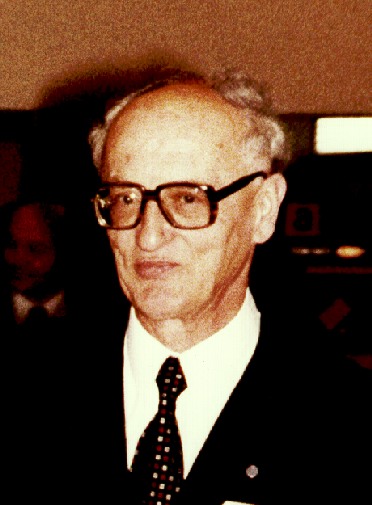-
(b.) -1918 December 21(d.)1980 May 25
Bio/Description
A German mathematician, physicist, and computer pioneer in the area of programming language translation and push-pop stack algorithms for sequential formula translation on computers, he was born in Strasbourg, Alsace, and he lived in Breslau in his early childhood years. Due to political circumstances, he waited until 1946 to study Mathematics and Physics at the Ludwig Maximilian University of Munich in Munich. After graduating, he worked shortly as a high school teacher before he returned to university. He completed his doctorate degree in Physics with Fritz Bopp with a dissertation on a quantum mechanical problem posed by Arnold Sommerfeld related to Unipolar Induction. He became interested in Numerical Analysis, and when Hans Piloty, an electrical engineer, and Robert Sauer, a professor of Mathematics, began working together, he joined and got involved in early computers as a research associate in the Mathematical Institute of the Technical University Munich. This changed his scientific career. His first publications came from Sauer's interests dealing with supersonic flow and precision problems of digital computations for numerical calculations of Eigenvalues. Soon after, his strong influence began on the development of Computer Science and Informatics as a new scientific discipline. With Friedrich L. Bauer, who also had Fritz Bopp as his Ph.D. advisor, he studied the structure of programming languages in order to develop efficient algorithms for their translation and implementation. This research led to bracketed structures and it became clear to him that this principle should govern the translation of programming languages and the run-time system with stack models and block structure. It was a fundamental breakthrough in how computer systems are modeled and designed. He had also worked with Piloty and Bauer on the design of PERM, a computer based partially on the Whirlwind concept. By 1955, the PERM was completed and they continued work that Bauer had begun in 1951 on concepts in automatic programming. He played a key role in the design of ALGOL 58 and ALGOL 60. In 1958, he accepted a chair for Mathematics at the University of Mainz, and since 1963 he held a chair at the Technical University Munich where he and F.L. Bauer, began to develop a university curriculum for Informatics and Computer Science. He was involved with international standards in programming and informatics through IFIP. He became an editor of the journal Acta Informatica when it began in 1971. He has authored and co-authored numerous publications.
-
Date of Birth:
1918 December 21 -
Date of Death:
1980 May 25 -
Gender:
Male -
Noted For:
His research led to a fundamental breakthrough in how computer systems are modeled and designed and he played a key role in the design of ALGOL 58 and ALGOL 60 -
Category of Achievement:
-
More Info:


